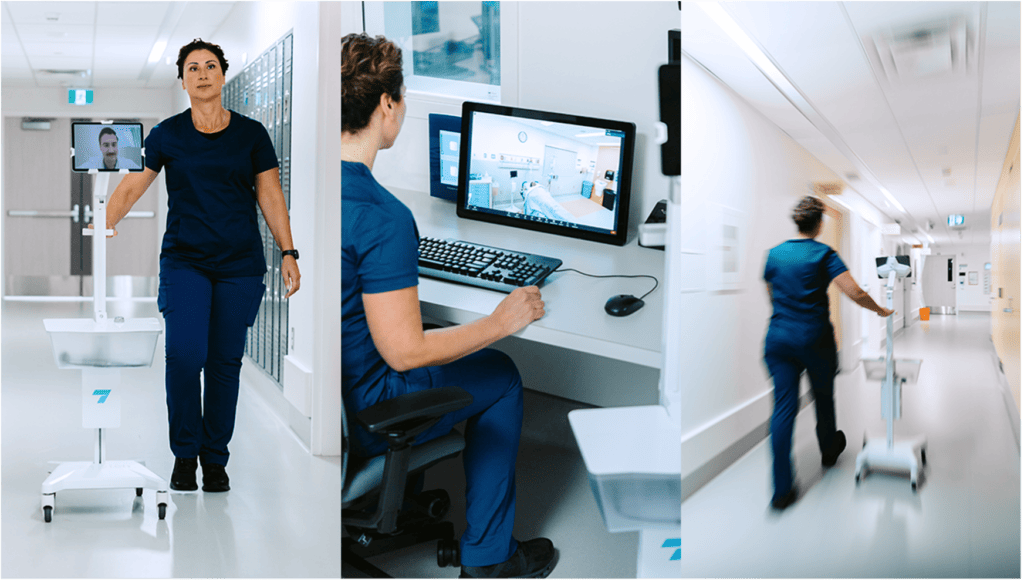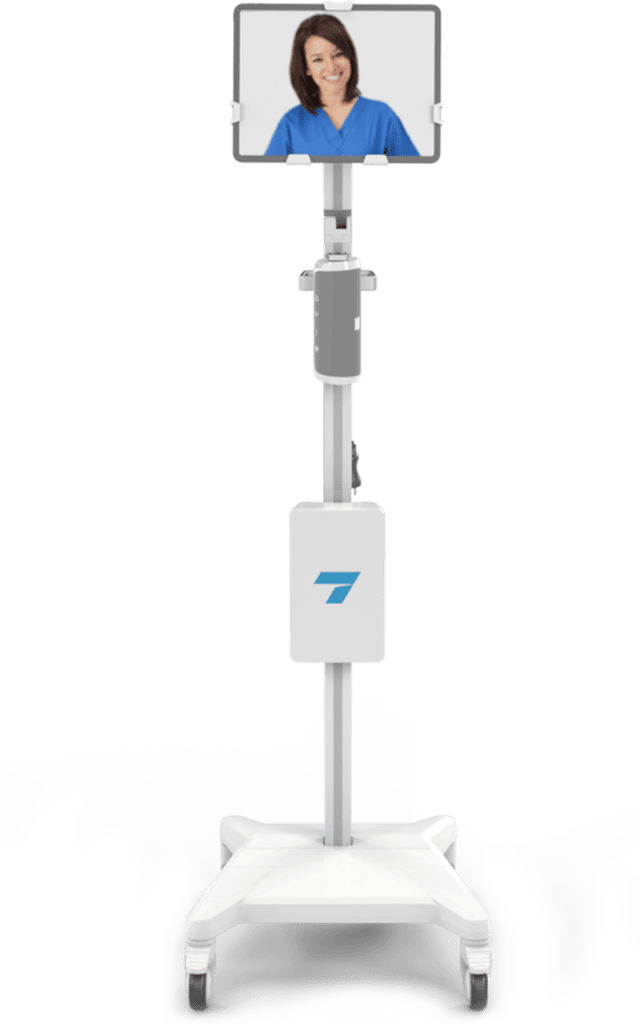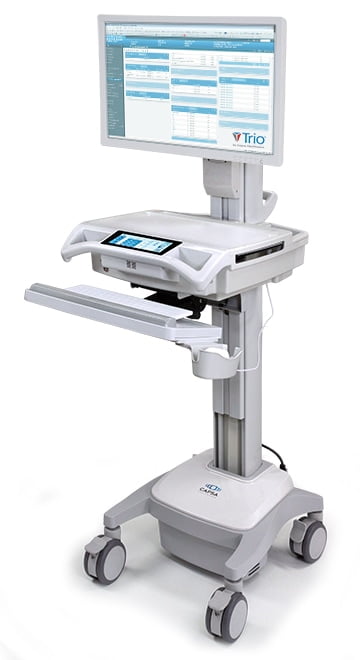
While burnout is often associated with physicians, nurses are also susceptible to its debilitating effects. Excessive workloads, long hours, and inadequate resources affect their well-being, resulting in exhaustion. As a result, this diminishes their job satisfaction and poses potential risks to patient safety.
As the healthcare industry grapples with nursing burnout, healthcare facilities must adopt effective solutions. Technological advancements and the growing acceptance of virtual care services have unlocked possibilities for telehealth to alleviate nursing burnout. By reducing physical demands, providing patient care remotely, and facilitating seamless transmission of medical data, telehealth is a viable solution.
In this blog, we will explore the root causes of nursing burnout and how telehealth mitigates burnout while enhancing patient care.
As per the American Nurses Organization, nursing burnout arises from prolonged and unattended workplace stress. The World Health Organization has outlined a range of burnout symptoms, including:

How common is burnout in nursing? Very. Nurses work long hours performing physically and emotionally demanding tasks. Results from a 2020 survey indicate that almost two-thirds of nurses (62%) experience burnout. It’s especially common among younger nurses, with 69% of nurses under 25 reporting burnout.
Burnout is often compared to a diminishing battery. However, this analogy falls short of capturing the tireless nature of the nursing profession. Unlike replaceable toy batteries, nurses don’t stop working when they feel exhausted. A 2022 survey reveals that burnout is the leading cause of nurses leaving their jobs. It stems from various factors intrinsic to the profession and systemic challenges within the healthcare system.

In the United States, a staggering 55% of nursing staff work more than 40 hours per week, while a substantial proportion (30-70%) of nurses sleep less than six hours before their shifts. Widespread sleep deprivation contributes significantly to nursing burnout, disrupting the natural sleep-wake cycle and hindering nurses’ ability to rest and rejuvenate.
The demand for nurses has risen due to the aging population of the Baby Boomer generation and the increase in chronic illnesses. Unfortunately, many hospitals struggle to keep up with this growing demand, resulting in a shortage of nurses. Consequently, nurses are compelled to work longer shifts and shoulder greater individual responsibilities, exacerbating their already challenging work conditions.
Working in fast-paced environments like the emergency department or intensive care unit exposes nurses to various stressors. They often encounter aggressive patients and traumatic injuries, face ethical dilemmas, and confront high mortality rates. A study conducted in 2018 revealed that 30% of oncology nurses reported experiencing emotional exhaustion, a prevalent symptom of burnout.
Leveraging technology to provide remote care can effectively address nursing burnout. By harnessing the power of videoconferencing, nurses can engage in direct patient communication while seamlessly accessing electronic medical records. Additionally, they can remotely monitor vital clinical data such as blood pressure and glucose levels using wireless patient monitoring devices and cameras to transmit data to healthcare providers.
Healthcare facilities must support nurses in delivering exceptional care amidst limited resources and escalating healthcare demands. To address these challenges, investing in innovative technological solutions is imperative. Capsa Healthcare’s Mobile Computing Workstations and Monitor and Tablet Carts are pivotal in empowering nurses to achieve these goals, facilitating their ability to provide efficient patient care.
Telehealth has transformed nursing workload management by enabling remote healthcare services. Virtual nurses can operate from remote centers using videoconferencing tools, observing patients, accessing data, and handling tasks like admissions and discharge instructions. This reduces in-person care demands, promotes work-life balance, and mitigates burnout risks.

When operating from fully equipped remote centers, virtual nurses are manned with fully loaded workstations. Built on a Tryten S1 Tablet and Medical Devices Cart, the Virtual Nursing Cart enables seamless connection between patients and remote nurses, who use audiovisual devices and medical peripherals for communication and treatment. Capsa’s Tryten virtual nursing carts offer various customization options to add, exchange, and upgrade devices and technology to meet patient needs.
This flexibility empowers nurses to manage their workload more effectively, reducing the need for in-person care. Consequently, nurses achieve a better work-life balance, gain control over schedules, and minimize the risk of burnout.

Streamlined documentation efficiently records patient information and assessments using Electronic Health Record (EHR) systems. When integrated with telehealth, EHR systems offer increased efficiency for nurses.
For example, nurses can enter patient data into the EHR system in real time with Capsa Healthcare’s Documentation Workstations, such as the Trio Computing Workstation. This eliminates the need for transcribing handwritten notes or transferring information from paper to digital format. By capturing information immediately, nurses can ensure documentation accuracy, reducing the risk of errors or omissions.
EHR systems can also automatically capture data from connected devices or telehealth platforms. For example, if a patient’s vital signs are monitored remotely during a telehealth session, the EHR system can receive and record that information directly, eliminating the need for manual data entry by the nurse. This automation saves time and ensures accurate and up-to-date data.
Telehealth platforms often include features that facilitate communication and collaboration among healthcare providers. Nurses can easily connect with colleagues and physicians through virtual meetings, messaging apps, and electronic health record systems. These powerful tools enable interdisciplinary collaboration and promote better teamwork and support, effectively combating feelings of isolation.
As we acknowledge the crippling effects of burnout on nurses’ well-being and patient safety, the adoption of telehealth is a promising solution. By harnessing the power of technology and implementing medical workstations, telehealth alleviates the burdens of excessive workloads and inadequate resources and offers a path toward reimagining healthcare delivery. It prompts us to reconsider traditional notions of in-person care and embrace the possibilities of virtual nursing. Review Capsa Healthcare’s diverse solutions to help mitigate nursing burnout and create a supportive work environment that fosters collaboration and empowers nurses.